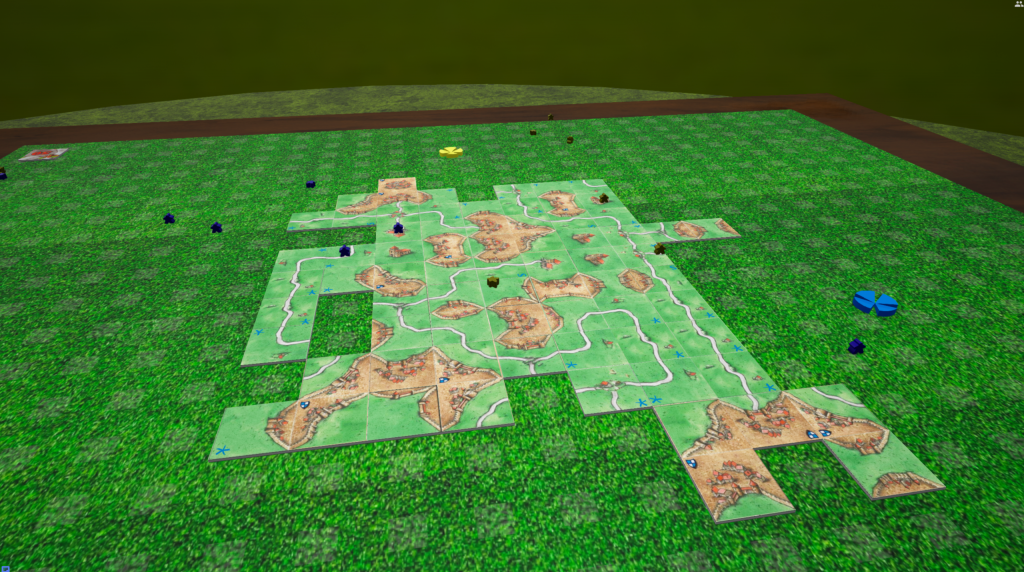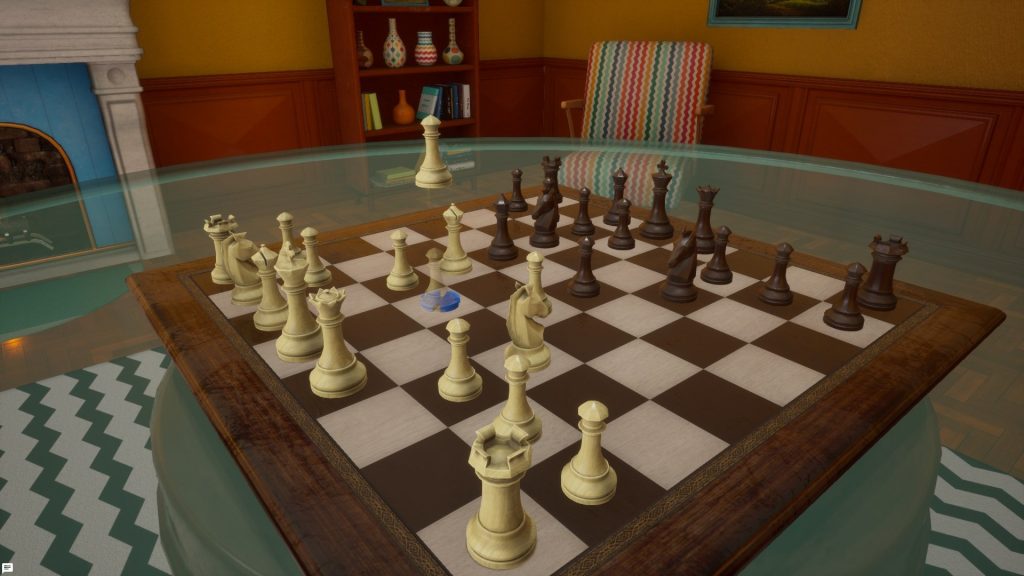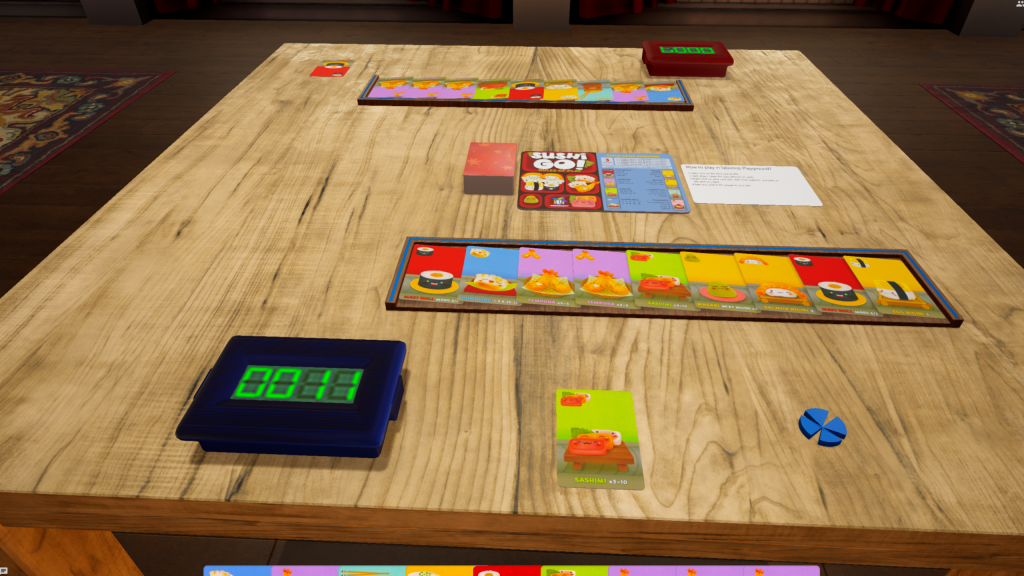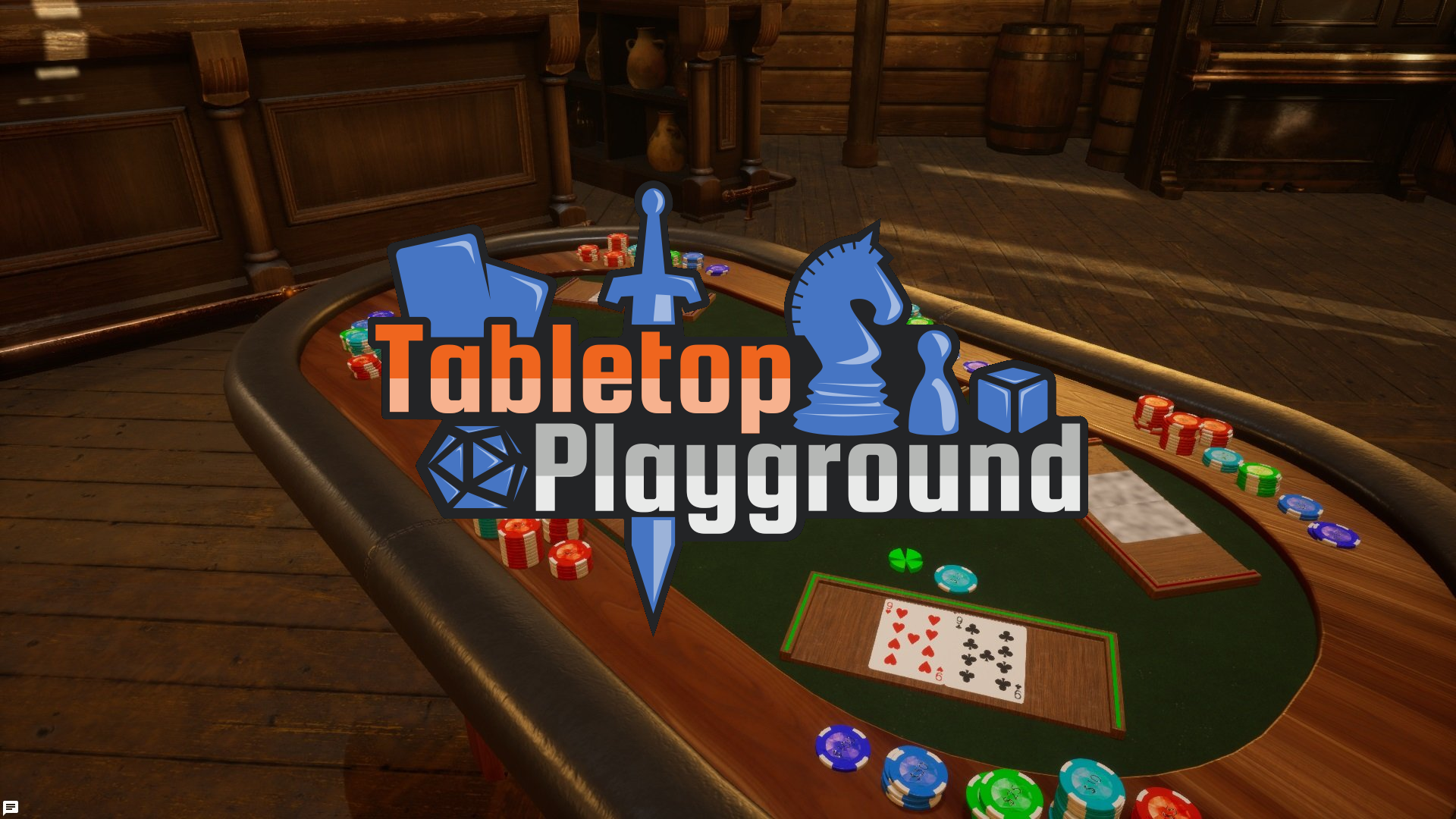Tabletop Playground is a brand new virtual way to play modern tabletop games in a digital form, from developer Plasticity Studios and publisher Modularity. Sat around a virtual table players can take turns, roll dice, pass and play cards – whilst sat at their computer. The game even has a VR mode that allows players to get more “hands on” with the virtual games. Instantly players will be able to play classic games such as Chess and Poker in 3D environments, however via customisable content many modern board games are also available to play.
One of the most obvious changes, from the similar title Tabletop Simulator, is how the cursor is used. Being a better option for board games, the regular cursor selects items based on its top down view location. This means if you are hovering over an item’s location it will be selected but not necessarily if the cursor is visually on it. This takes a little getting used to but it does mean if the view angle is ever changed the cursor can still be selecting the same component, regardless of angle or rotation of the camera.
To increase the portfolio of games available Tabletop Playground utilizes Mod.io instead of Steam’s Workshop. In reality they both work in the same way, with the integration of Mod.io perhaps giving Tabletop Playground the edge in useability. While in game players can link their Steam account to Mod.io and search all of the available custom games. Subscribing to them, again still in game, sees them instantly downloaded in a matter of seconds. One quality of life improvement would be a way to unsubscribe from these from the load menu, rather than having to re-browse for them – though this is certainly not a deal breaker.

At this time, while the library has been filling out, there are still many more games available on the likes of Tabletopia. That being said, many fan favourites such as Carcassonne, Sushi Go, Azul, Love Letter and more are available to play – some even coming with snapping and scripting. Even newer releases, such as Horrified, feature in the downloadable category. There is the same legality issue that other tabletop games run into of having publisher content on their game. As someone whom owns all of the physical versions of mods there is plenty to enjoy, though it still is a little bit of a grey area.
Playing board games virtually with friends is truly what this video game is all about. It is extremely simple to have one player launch one of the classic games, join it and start playing together. The game supports up to 8 and while we only tested with up to 4 this worked well. The only niggles that we ran into were when a player didn’t have a mod installed or we wanted to change the board game being played.
Each player must be subscribed to a mod in order to join a host running it. While this isn’t a hard task to manage, a simple “would you like to subscribe and download” feature would make this a more streamlined experience. There is also no obvious way to load a different board game whilst maintaining all players in the same “room”. A quick stop and restart solves this problem, though it just makes the experience rougher around the edges.

There are several instances where the user interface can be improved. Players need to right click and go into a player options menu to change the cursor type or change colour. This also extends to session based parameters such as rotation angles. The screen is left clear of an interface, and this is seemingly so players can only see the game they are playing. In reality it just moves the interface behind a menu that results in useful options not being instantly accessible. There are some great aspects too though regarding the user experience. Cards and components are clearly indicated when the cursor is selecting them. There’s the ability to hold Alt when hovering over a card to pop up a large version of it to make things legible and it is easy to have hidden cards via the use of player owned card holders.
Visually most of the game looks on point. The main star of the show, the board games, are all high res and the games that have table presence in real life certainly still have it in digital form. From the vibrancy of the Azul tiles the world known board of Catan, the look and the colours of these games are well captured. A few aspects let the overall experience down, with non-3D environments feeling lacklustre and even the 3D environments being acceptable at best. Still, they aren’t what players will focus on during play.
One of the features that is missing from Tabletop Playground is the ability to perfectly undo. Be this a tile is moved into the wrong place, or a stack of components is knocked over. It is far from a streamlined element of Tabletop Simulator, however it does at least exist in that game. An autosave and load state feature is present, alas it doesn’t account for every action. For example if you drop in 15 cubes but you only need 10 it isn’t a case of just undoing five times, nor will the load state feature help you undo that every time. In this example just deleting 5 is the simple answer but during play that isn’t always an option.

A common theme of this preview is there is a lot of promise in Tabletop Playground, it just needs time, a community and polish. After an initial play the top down cursor selection felt unusual, though now the precision it allows is greatly appreciated. Coupled with the way the UI highlights the item that’s being hovered over, it makes it extremely easy to pick up the exact piece you want to. As mentioned the UI is both a positive and a hindrance currently, though as a beta there is plenty of time to see improvements. Tabletop Simulator did need a competitor and Tabletop Playground can certainly provide that, as it is already in a solid state. Though, it still needs a community to grow around and with it to fulfill the potential it has.
(Editor’s Note: Tabletop Playground was provided to us by the developer for the preview. Check out the offical website of the game or the Steam page.)

